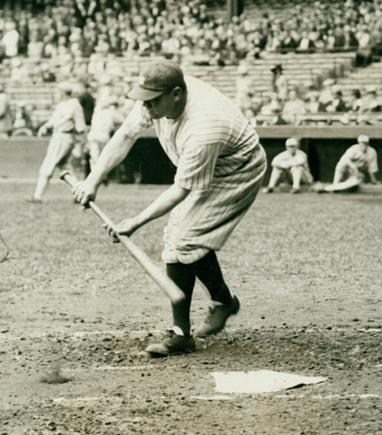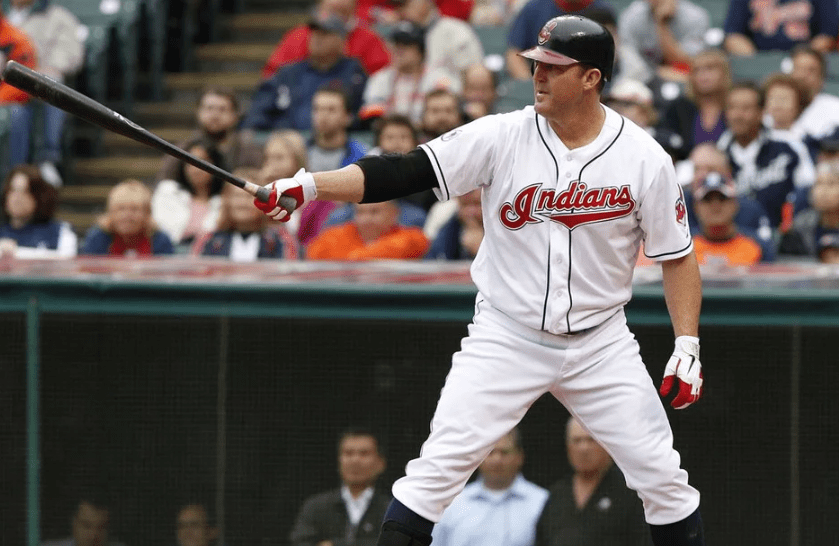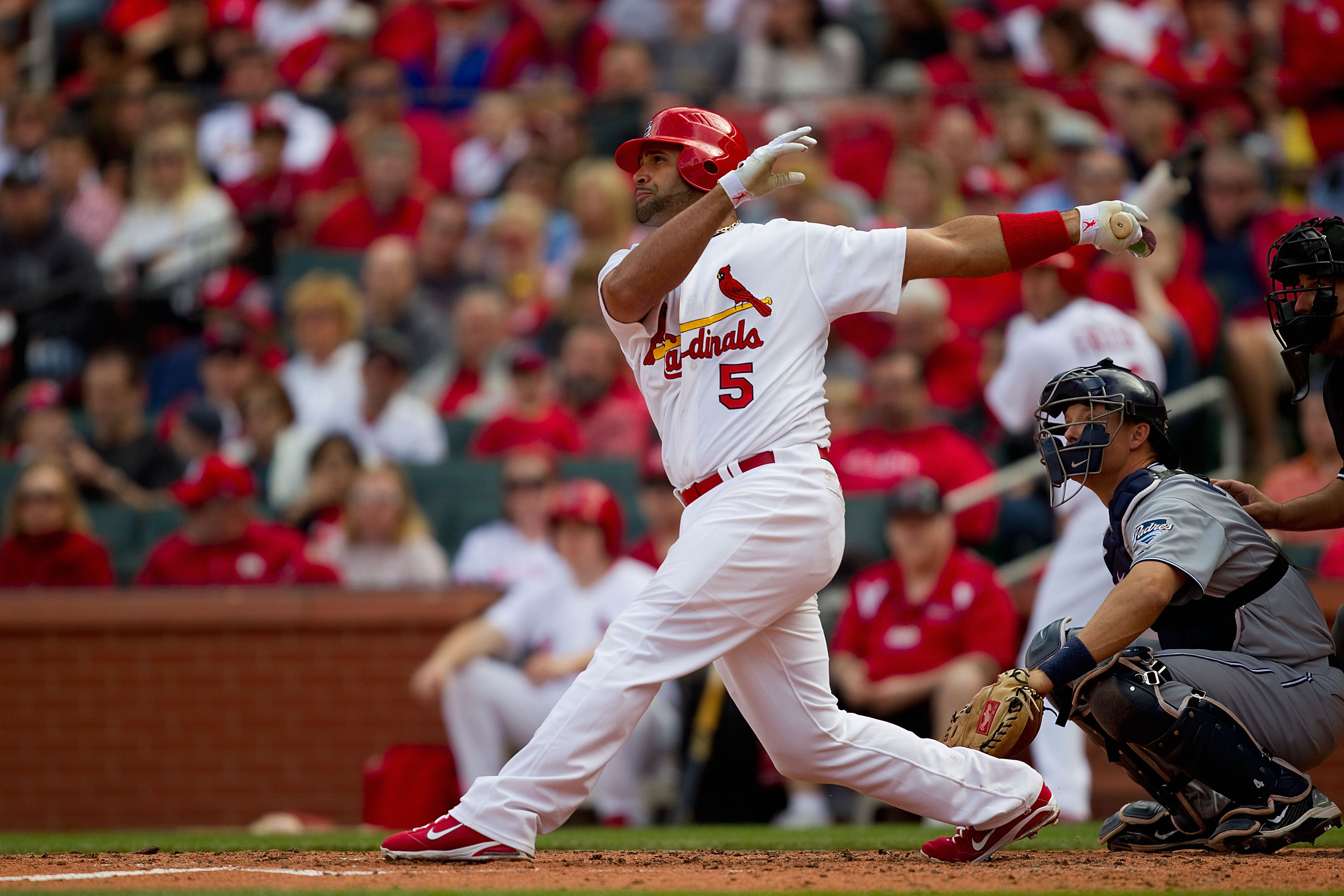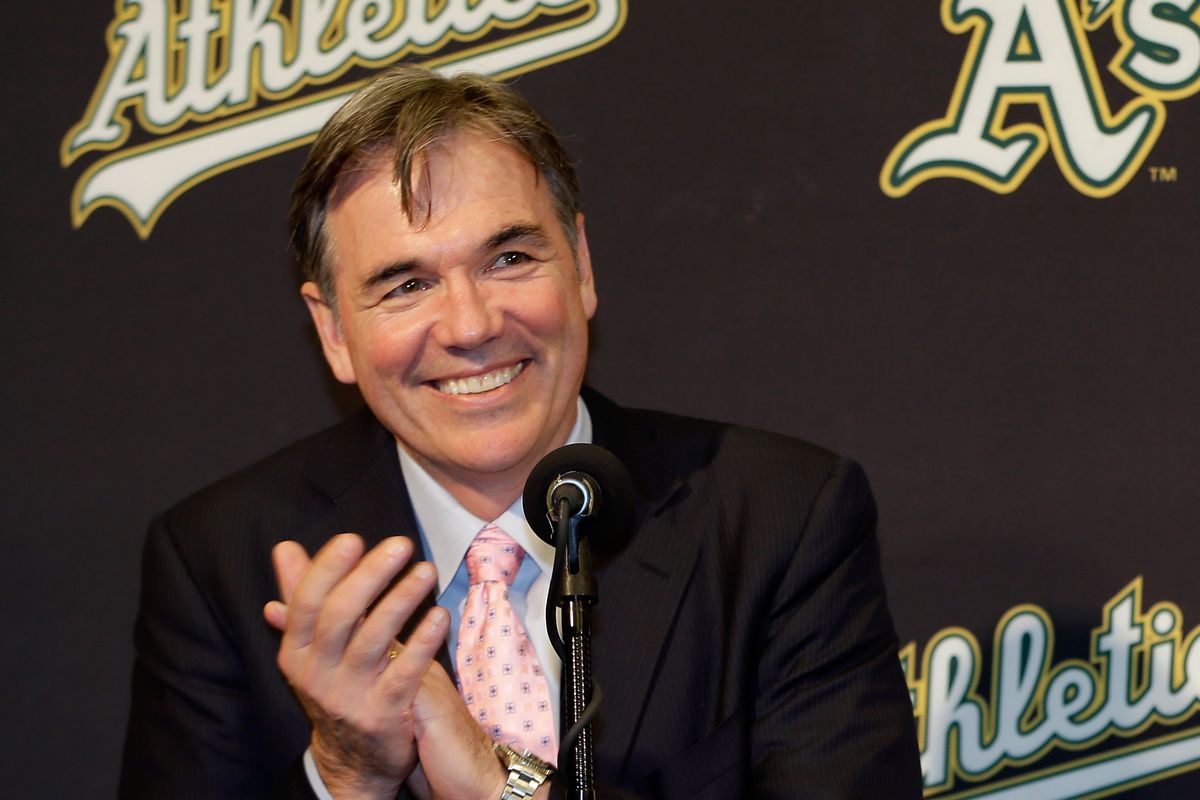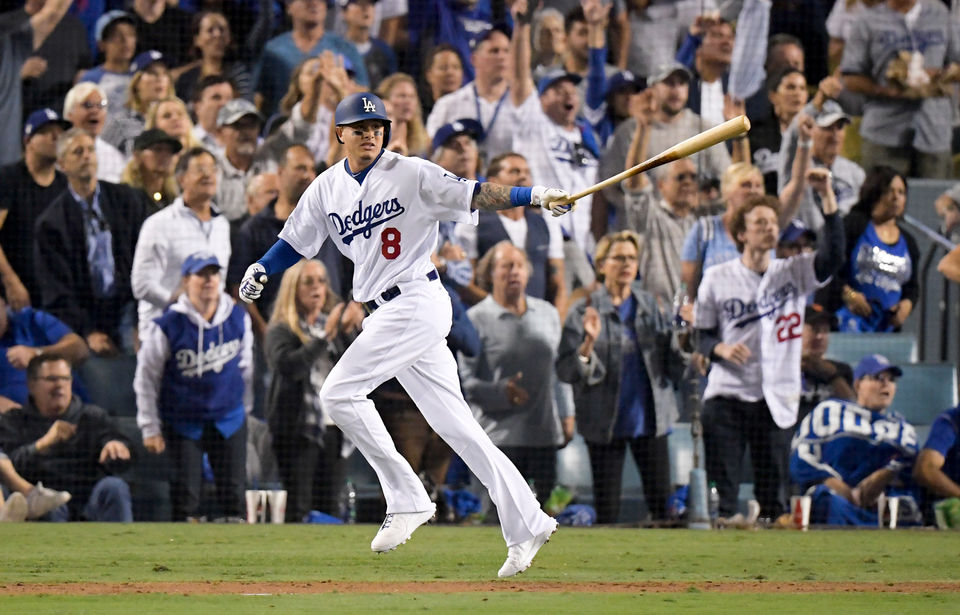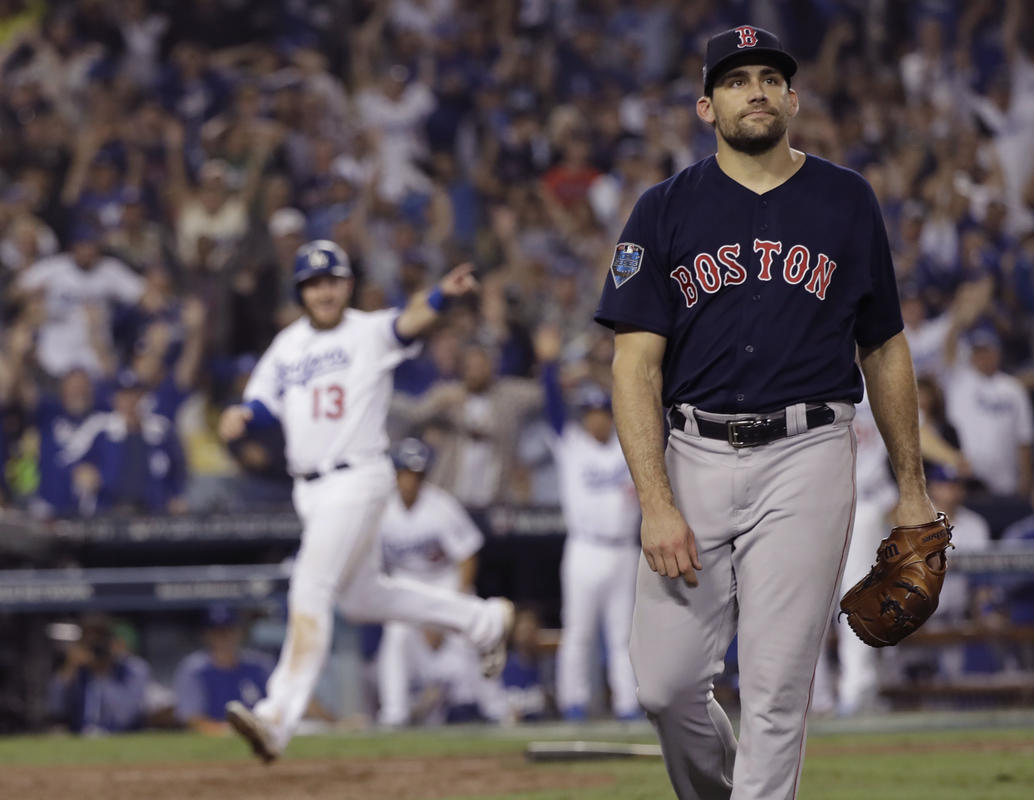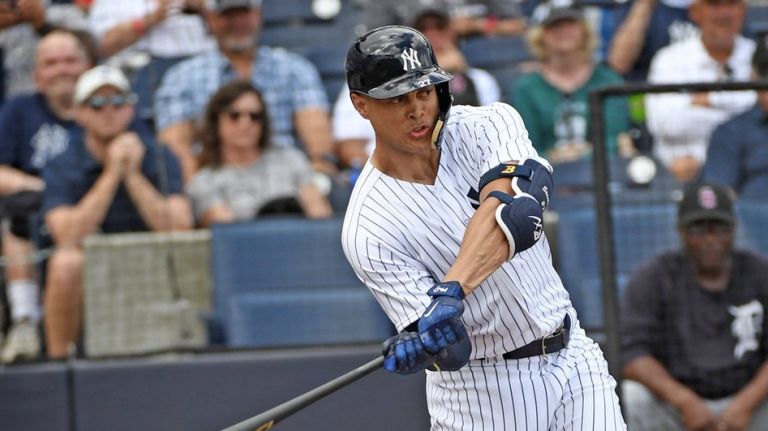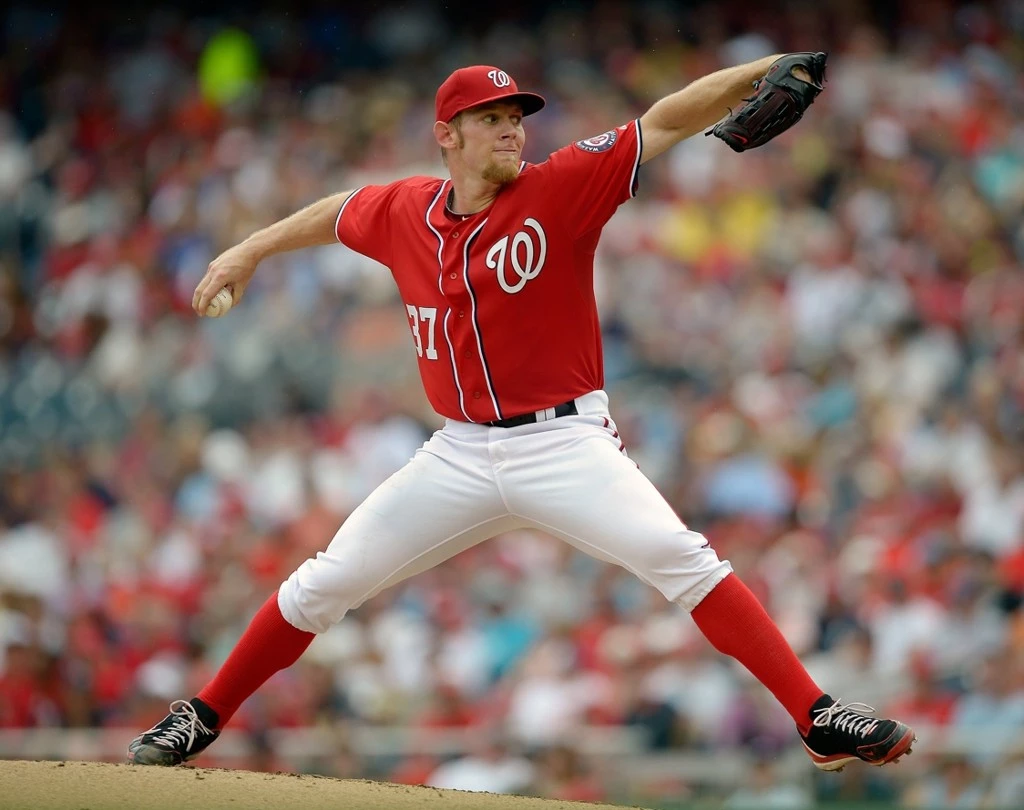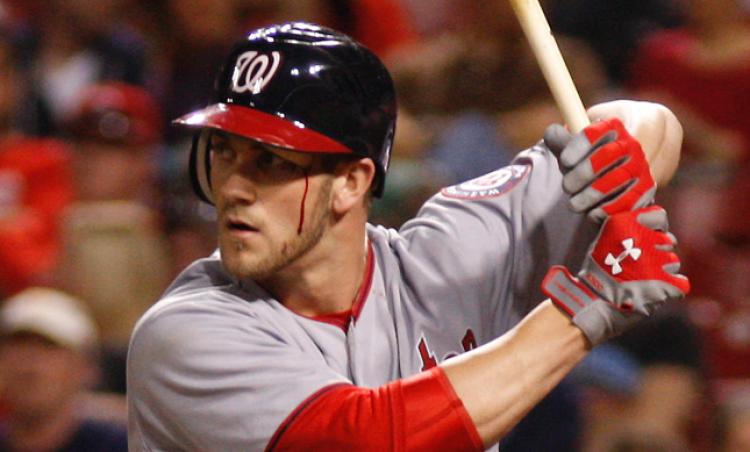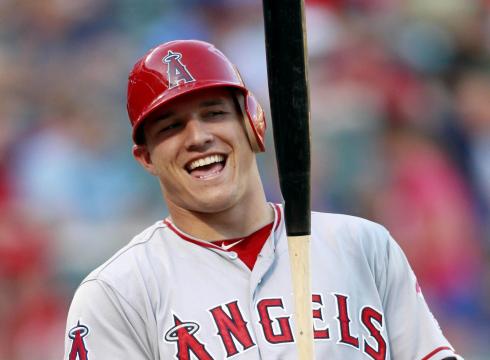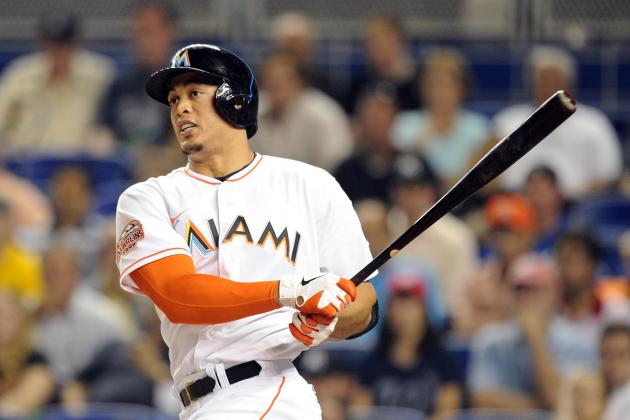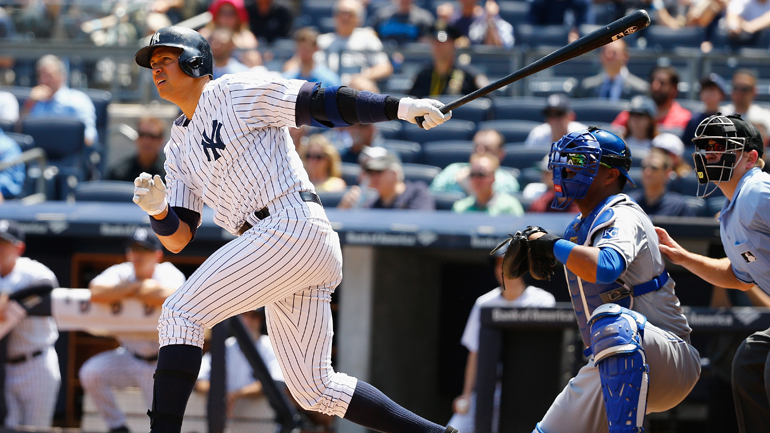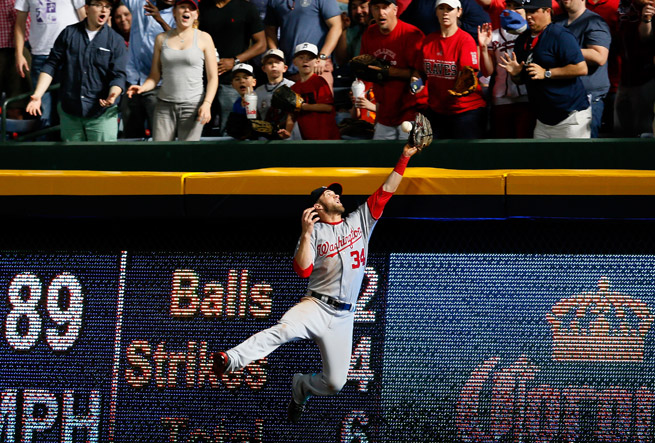Tagged: Free Agency
Rickey: The Life and Legend of an American Original
In the argument for who the greatest baseball player of all time is, there always seems to be one name missing. Rickey Henderson. The all-time leader in Stolen Bases and Runs scored, over 3,000 Hits, and the single season Stolen Base record is somehow excluded from the discussion. The difference between Henderson’s 1,406 Stolen Bases and second place, Lou Brock’s 938, would rank as the 47th most career Stolen Bases. His complete domination on the bases is unlike anything ever seen in baseball. Howard Bryant explores the Man of Steal on and off the diamond in Rickey: The Life and Legend of an American Original.
There will never be another Rickey Henderson. His abilities on the diamond are unlike anyone before him, and almost certainly anyone after him. After getting on base, often thanks to his expert eye on the strike zone, everyone knew he was going to steal. Literally everyone from the parking attendant, hot dog vendor, scoreboard operator, pitcher, and catcher. It was a matter of time before Henderson took off. When he was in flight it was a thing of beauty. A walk would quickly turn into a Double or Triple. He disrupted the game and forced the defense to focus on him and not the batter.

Henderson’s career coincided with the flourishing of free agency. He always focused on receiving the salary he was worth. This rubbed many people the wrong way, but Rickey did not care. He knew his worth and wanted the dollars to prove it. His lengthy career saw Henderson go from Rookie phenom to a perceived arrogant super star to the wise veteran. He was all of these things and more. His singular focus on assaulting the record books took him to Cooperstown. Along the way, Rickey never forgot his Oakland roots. Despite playing away from Oakland for more than a decade, Henderson always returned home. A proud product of Oakland to a star in the Bronx under immense pressure of the media and George Steinbrenner then returning home and becoming a journeyman willing to help any team make a deep run in the Postseason. Rickey Henderson’s baseball life had more lives than a cat.
Longevity is a sign that a player is healthy, has a dominant skill, or is able to reinvent themselves. Rickey Henderson did all three. He was hounded by accusations that he only played when he wanted, but Henderson knew when his body needed rest. Henderson’s dominant skills were his speed on the bases, his eagle eye for the strike zone, and later the power in his bat. Pitchers had to throw him a strike or he would not swing. If they threw him a strike he had the power to send the baseball into the seats. Rickey Henderson was a problem. He was a combination of speed and power that only exists in video games. He always found a way to impact the game and remain in the game after his contemporaries retired. Henderson’s talents on the diamond were as undeniable as his motivation and persistence. Time is undefeated, but its fight against Rickey was one of its toughest battles.
Howard Bryant tells a more complete story of Rickey Henderson in Rickey: The Life and Legend of an American Original. Separating the man from the myth and legend is no easy task. Few athletes have been as puzzling and electrifying as Rickey Henderson. Accepting that there can be truth in every story and then figuring out what is and is not the truth takes time and patience. Bryant’s writing takes readers on a journey through Henderson’s quarter century racing around a diamond. He examines Henderson’s legacy, and the ugliness that race has played in the creation and continuation of the myths about Rickey. He is a one of a kind athlete. Howard Bryant’s skillful writing captures Rickey Henderson perfectly. Rickey: The Life and Legend of an American Original is a beautifully written book. It receives an 8, a Home Run.
DJ
United States of Baseball- Utah
Utah is pushing to someday have a Major League team. While they wait, the Beehive State continues to grow its baseball tradition. The United States of Baseball is important for baseball powerhouses like California and Florida, and for less prodigious baseball states like Utah and its 43 Major League players. The greatest pitcher born in Utah is Bruce Hurst. His 34.52 career WAR is the 42nd highest among state and territory pitching leaders. The greatest position player born in the Beehive State is Duke Sims. His 12.78 career WAR is the 51st highest among state and territory position player leaders. Utah has a combined 47.30 WAR, ranking the Beehive State 50th among all states and territories.
There is always a first. The first player ever drafted from Utah was Bruce Hurst. The St. George native was selected by the Boston Red Sox in the 1st Round, 22nd overall, of the 1976 MLB Draft. The crafty Lefty pitched 15 seasons with 4 teams: Boston Red Sox (1980-1988), San Diego Padres (1989-1993), Colorado Rockies (1993), and Texas Rangers (1994). Hurst pitched in 379 career Games, made 359 Starts, 5 Games Finished, with 83 Complete Games, 23 Shutouts, 2,417.1 Innings Pitched, allowed 2,463 Hits, 1,143 Runs, 1,052 Earned Runs, 740 Walks, 1,689 Strikeouts, posted a 145-113 record, with a 3.92 ERA, 1.325 WHIP, and 104 ERA+. He has the second most Wins at Fenway Park with 57, behind only Mel Parnell’s 71. Hurst was the third pitcher to record 1,000 career Strikeouts with the Red Sox. He was inducted into the Red Sox Hall of Fame in 2004. He left Boston in Free Agency after the 1988 season after the Front Office played hardball and told him to test the open market. This was during the Owner’s Collusion to stamp out free agency. Ultimately Hurst signed with the Padres. His 1987 All Star selection remains Utah’s only trip to the Mid-Summer Classic. He is also the Beehive State leader in Wins, Losses, Games Started, Complete Games, Shutouts, Innings Pitched, Hits, Runs, Earned Runs, Home Runs, Walks, and Strikeouts. After retiring he served as a coach and scout internationally for Major League Baseball in Italy and Latin America, and as the Pitching Coach for the Chinese National Baseball team in 2005-2006 and 2012-2013.
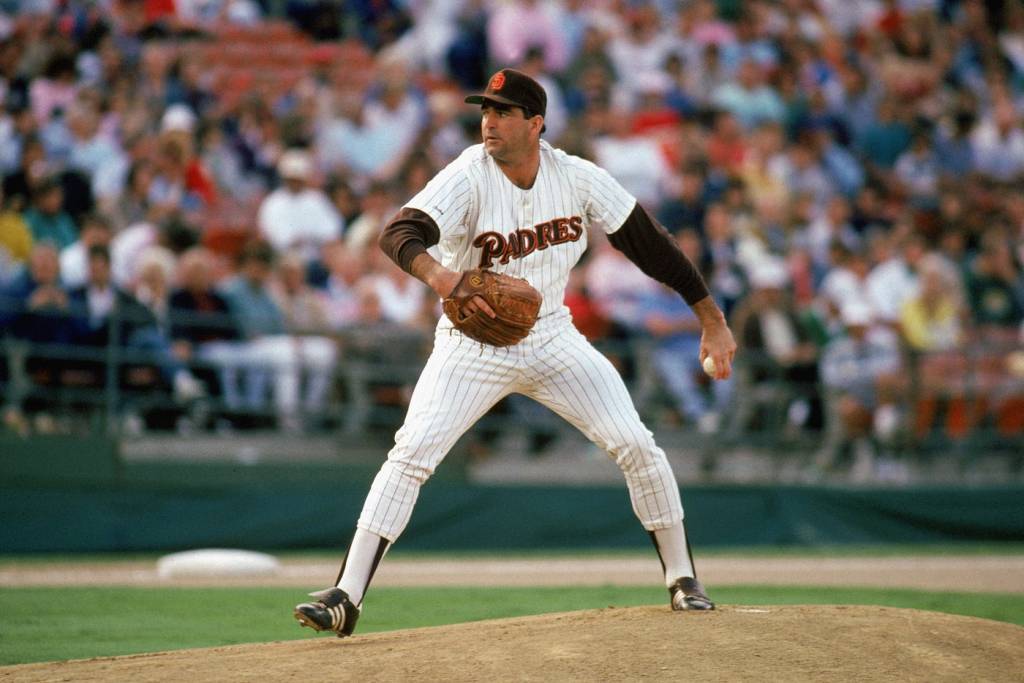
The best season of Hurst’s career came with the 1989 Padres. He pitched in 33 Games, made 33 Starts, threw 10 Complete Games, including 2 Shutouts, in 244.2 Innings Pitched, allowed 214 Hits, 84 Runs, 73 Earned Runs, 66 Walks, 179 Strikeouts, posted a 15-11 record, with a 2.69 ERA, 1.144 WHIP, and 131 ERA+. Hurst led the National League in Complete Games. He also set career bests in Games Started, Innings Pitched, and ERA. The Padres finished just 3 Games Behind the San Francisco Giants for the National League West Division title.
Hurst pitched in three Postseason series: 1986 and 1988 American League Championship Series and 1986 World Series. He pitched in 7 Postseason Games, made 7 Starts, threw 3 Complete Games, in 51 Innings Pitched, allowed 46 Hits, 14 Runs, 13 Earned Runs, 12 Walks, 37 Strikeouts, posted a 3-2 record, with a 2.29 ERA, and 1.137 WHIP. Hurst nearly pitched the Red Sox to a World Series title against the Mets. He Started Games 1, 5, and 7. He threw 8 Shutout Innings in the Red Sox Game 1 victory. He pitched a Complete Game victory in Game 5. In Game 7, Hurst pitched 6 Innings and allowed 3 Earned Runs. When he left the game the score was tied 3-3, before the Mets pulled away for an 8-5 victory. Boston needed to win one of the final two games, but The Curse of the Bambino was stronger than Hurst’s Left Arm.
Duane “Duke” Sims made a career as a solid backstop. The Salt Lake City native played 11 seasons with 5 teams: Cleveland Indians (1964-1970), Los Angeles Dodgers (1971-1972), Detroit Tigers (1972-1973), New York Yankees (1973-1974), and Texas Rangers (1974). Sims played in 843 career Games, scored 263 Runs, collected 580 Hits, 80 Doubles, 6 Triples, 100 Home Runs, 310 RBI, 6 Stolen Bases, drawing 338 Walks, 483 Strikeouts, posting a .239 BA, .340 OBP, .401 SLG, .741 OPS, 112 OPS+, and 972 Total Bases. His most famous Home Run came on September 30, 1973 off of Fred Holdsworth. Sims hit the final Home Run at Yankee Stadium before the House That Ruth Built closed for two seasons for extensive renovations. Sims is Utah’s all-time leader in career Games Played, Plate Appearances, At Bats, Runs scored, Hits, Double, Home Runs, RBI, Walks, and Strikeouts. Career success is measured in many ways.
The best season of Sims’ career came with the 1970 Cleveland Indians. He played in 110 Games, scored 46 Runs, collected 91 Hits, including 12 Doubles, 23 Home Runs, 56 RBI, drew 46 Walks, 59 Strikeouts, .264 BA, .360 OBP, .499 SLG, .859 OPS, 131 OPS+, and 172 Total Bases. Sims set career best in Hits, Home Runs, RBI, SLG, OPS, and Total Bases. That Winter, Cleveland traded him to the Los Angeles Dodgers for Alan Foster and Ray Lamb.
Sims played in one Postseason series, the 1972 American League Championship Series with the Detroit Tigers. The Tigers lost in five games. Sims played in 4 Games, collected 3 Hits, 2 Doubles, 1 Triple, drew 1 Walk, 2 Strikeouts, with a .214 BA, .267 OBP, .500 SLG, .767 OPS, and 7 Total Bases. October can be a mystery for some teams.
No Utah native has been elected to the Hall of Fame. Bruce Hurst appeared on the 2000 Hall of Fame ballot and received one vote (0.2%). Duke Sims appeared on the Hall of Fame ballot in 1980, but received no votes. As the state produces more Major League quality players, Cooperstown should eventually get its first member from the Beehive State. Next the United States of Baseball returns to New England and The Green Mountain State. Vermont is next.
DJ
United States of Baseball- Montana
Anyone who has been to Montana understands the state is huge and its small population is scattered across the state. Montana baseball took a hit with Minor League Baseball’s realignment as Billings and Missoula lost their affiliation. Both teams, and others, have since formed the independent Pioneer League. Baseball continues in Big Sky Country without a direct path to the Majors. 26 native Montanans have reached the Major Leagues. The greatest Montana born pitcher is Dave McNally. His 25.54 career WAR ranks 46th highest of all state and territory pitching leaders. The greatest position player from Montana is John Lowenstein. His 9.96 career WAR ranks 52nd highest of all state and territory. Lowenstein has the lowest WAR for a state leader in the Lower 48. Montana has a combined WAR of 35.50. Big Sky Country ranks 52nd, the worst of any state.
Dave McNally lived his entire non-baseball life in Billings. He left his hometown to pursue baseball after signing for $80,000 with the Orioles in September 1960. The Lefthander pitched for 14 seasons with two teams: Baltimore Orioles (1962-1974) and Montreal Expos (1975). McNally pitched in 424 career Games, made 396 Starts, threw 120 Complete Games, including 33 Shutouts, Pitched 2,730 Innings, allowed 2,488 Hits, 1,070 Runs, 982 Earned Runs, 230 Home Runs, 826 Walks, 1,512 Strikeouts, posted a 184-119 record, with a 3.24 ERA, 1.214 WHIP, and 106 ERA+. He was a three time All Star and the first pitcher to earn more than $100,000 a season. McNally was one of four Orioles to win 20 games in 1971 and the first of the quartet to earn his 20th win.
McNally pitched in five ALCS and four World Series. He pitched in 14 Postseason Games, made 12 Starts, threw 6 Complete Games, including 2 Shutouts, Pitched 90.1 Innings, allowed 65 Hits, 30 Runs, 25 Earned Runs, 12 Home Runs, 34 Walks, 65 Strikeouts, posted a 7-4 record, with a 2.49 ERA, and 1.096 WHIP. McNally helped Baltimore win the Fall Classic twice, 1966 and 1970. Manager Hank Bauer started the young lefty in Games 1 and 4 during the 1966 World Series. McNally is one of two pitchers to hit a World Series Home Run, with Bob Gibson, and the only to hit a Grand Slam.
Unquestionably the best season of Dave McNally’s career was with the 1968 Orioles. He made 35 Starts, threw 18 Complete Games, including 5 Shutouts, Pitched 273 Innings, allowed 175 Hits, 67 Runs, 59 Earned Runs, 24 Home Runs, 55 Walks, 202 Strikeouts, posted a 22-10 record, with a 1.95 ERA, 0.842 WHIP, and 150 ERA+. He started the Year of the Pitcher 15-0, finally losing on August 3rd. McNally led the American League in WHIP and was the American League Comeback Player of the Year after an injury plagued 1967. Despite his success, McNally received no Cy Young votes and finished fifth in the MVP voting. He was great, but Denny McLain redefined baseball.
After a trade to Montreal in a bid to restart his career, McNally walked away from baseball. He never filed for retirement and was officially considered an active player. The head of the Player’s Union, Marvin Miller, successfully used McNally and Andy Messersmith to challenge baseball’s reserve clause, ushering in free agency. McNally did not return to baseball after the ruling. He appeared on the Hall of Fame ballot for four years, peaking at 2.8% in 1986. He was named to the Orioles All Century team and Montana’s Athlete of the Century by Sports Illustrated in 1999. Dave McNally helped grow baseball on and off the mound.
John Lowenstein despised fan clubs. His hatred for them led to the creation of the Lowenstein Apathy Club, which fans reluctantly joined without much enthusiasm. A quirky guy capable of playing all over the diamond, Lowenstein was a true utility player. He was born in Wolf Point and moved to Southern California before high school. The Cleveland Indians selected him in the 18th round of the 1968 MLB Draft out of the University of California, Riverside. He played 16 seasons with three teams: Cleveland Indians (1970-1977), Texas Rangers (1978), and Baltimore Orioles (1979-1985). He was briefly a member of the expansion Toronto Blue Jays prior to the 1977 season, as he was traded to and from Canada during the offseason. Lowenstein played in 1,368 career Games, collected 881 Hits, 137 Doubles, 18 Triples, 116 Home Runs, 441 RBI, scored 510 Runs, 128 Stolen Bases, 446 Walks, 596 Strikeouts, with a .253 BA, .337 OBP, .403 SLG, .741 OPS, and 108 OPS+.

While playing in Baltimore, Lowenstein platooned with Gary Roenicke in Left Field. Despite his part time play, Lowenstein enjoyed the best season of his career in 1982. He played in 122 Games, collected 103 Hits, including 15 Doubles, 2 Triples, 24 Home Runs, 66 RBI, scored 69 Runs, 7 Stolen Bases, 54 Walks, 59 Strikeouts, with a .320 BA, .415 OBP, .602 SLG, 1.017 OPS, and 176 OPS+. The Orioles finished one game behind the Milwaukee Brewers for the American League East title.
Lowenstein played in two World Series, losing in 1979 and winning in 1983. In the Fall Classic, he played in 10 Games, collected 8 Hits, including 2 Doubles, 1 Home Run, 4 RBI, scored 4 Runs, 1 Walk, 6 Strikeouts, with a .308 BA, .333 OBP, .500 SLG, and .833 OPS. However, the peak of Lowenstein’s Postseason career was a 10th Inning Pinch Hit walk off three run Home Run in Game 1 of the 1979 ALCS against the California Angels. Memorial Stadium exploded into ecstasy as Lowenstein rounded the bases.
Lowenstein retired after the Orioles released him in 1985 and began working as a broadcaster. He called games for the Orioles and the NBC Game of the Week. In 1991, Lowenstein appeared on the Hall of Fame ballot and received 0.2% of the vote.
There are no Montanans in Cooperstown, hopefully this changes some day. Next week the United States of Baseball heads towards the middle of the country and the Cornhusker State. Nebraska is next.
DJ
United States of Baseball- Kansas
Fly over states may not have the large cities that attract Major League teams, but they play plenty of baseball. Kansas does not lack for baseball talent with 218 MLB players born in the Sunflower State. The best Kansas born pitcher is one of the greatest of all time. Walter Johnson has the most career WAR, 164.54, for a pitcher born in Kansas. He has the second highest WAR for any state and territory pitching leader. Johnny Damon is the greatest position player born in the Sunflower State. His 56.33 career WAR ranks 35th among state and territory leaders. Johnson and Damon give Kansas 220.87 WAR, 8th highest among all states and territories.
Walter Johnson is on the Mount Rushmore of Major League pitchers. Few pitchers can compare to the Humboldt native. The Right Hander pitched 21 seasons for the Washington Senators. In 802 career Games, Johnson made 666 Starts, threw 531 Complete Games, including 110 Shutouts, pitched 5,914.1 Innings, allowed 4,913 Hits, 1,902 Runs, 1,424 Earned Runs, 97 Home Runs, 1,363 Walks, 3,509 Strikeouts, posted a 417-279 record, 2.17 ERA, 1.061 WHIP, and 147 ERA+. On July 1, 1920 against the Red Sox Johnson threw his only career No Hitter. Four years later, he helped propel the Senators to their only World Series victory. The Big Train holds the record for most career 1-0 Wins (38) and Losses (26). He is likely the permanent all time leader in Shutouts.
Johnson dominated. He had 10 consecutive 20 Win seasons. He led the American League in Strikeouts 12 times, Shutouts seven times, Wins, Complete Games, WHIP, and ERA+ six times, and Innings Pitched five times. The Big Train struck out 300 batters twice and 200 batters seven times. He posted a WHIP below 1.000 nine times. His ERA+ was over 200 four times and 150 eight times. Johnson’s domination included an ERA under 2.00 11 times and winning five ERA Titles. He won the Pitching Triple Crown three times (1913, 1918, 1924) and the American League MVP twice (1913 and 1924). In 1936 Johnson was elected to the Hall of Fame as part of the inaugural class.
Johnson’s best season was 1913. He pitched in 48 Games, made 36 Starts, threw 29 Complete Games, including 11 Shutouts, pitched 346 Innings, allowed 232 Hits, 56 Runs, 44 Earned Runs, 9 Home Runs, 38 Walks, 243 Strikeouts, posted a 36-7 record, 1.14 ERA, 0.780 WHIP, and 259 ERA+. Johnson won the MVP award while leading the league in Wins, Winning %, Complete Games, Shutouts, Innings Pitched, Home Runs, Strikeouts, ERA, WHIP, and ERA+. Total control on the mound as the Senators won 90 games to finish second for the pennant.
“We’re idiots.” Boston’s Johnny Damon as the Red Sox marched to their 2004 World Series title. The Fort Riley native was a veteran leader that helped return Boston to baseball glory. The sometimes caveman looking Centerfielder played 18 seasons for seven teams: Kansas City Royals (1995-2000), Oakland Athletics (2001), Boston Red Sox (2002-2005), New York Yankees (2006-2009), Detroit Tigers (2010), Tampa Bay Rays (2011), and Cleveland Indians (2012). In 2,490 career Games, Damon collected 2,769 Hits, 522 Doubles, 109 Triples, 235 Home Runs, 1,139 RBI, scored 1,668 Runs, 408 Stolen Bases, 1,003 Walks, 1,257 Strikeouts, .284 BA, .352 OBP, .433 SLG, .785 OPS, and 104 OPS+. He scored at least 100 Runs 10 times. He was twice an All Star (2002 and 2005) and World Series champion (2004 and 2009). Damon appeared on the 2018 Hall of Fame ballot, receiving 1.8% of votes. He is best remembered for his departure in Oakland helping to usher in the Moneyball era and ending the Curse of the Bambino.
Damon’s best season was in 2000 for the Royals. He played in 159 Games, collected 214 Hits, 42 Doubles, 10 Triples, 16 Home Runs, 88 RBI, scored 136 Runs, 46 Stolen Bases, 65 Walks, 60 Strikeouts, .327 BA, .382 OBP, .495 SLG, .877 OPS, and 118 OPS+. He led the Junior Circuit in Runs scored and Stolen Bases. Damon set career highs in Plate Appearances, At Bats, Runs scored, Hits, Doubles, Stolen Bases, BA, OBP, SLG, and Total Bases. He was the July Player of the Month as he posted a 6.2 WAR season. Damon finished 19th in MVP voting. The Royals tried to resign him, but the constant losing took its toll. Kansas City traded him to Oakland instead of losing him in Free Agency.
Kansas has sent two players to Cooperstown, Walter Johnson and Joe Tinker. Damon was a good player, but not quite Hall of Fame worthy. Kansas continues to wait for a third member in Cooperstown. Next week the United States of Baseball heads to the land of horse racing and basketball. The Bluegrass State is next, Kentucky.
DJ
Non-Tendered
Fans get excited about free agency, especially if their team lands one of the winter’s big names. The Phillies and Bryce Harper, the Yankees and Gerrit Cole, the Mariners and Robinson Cano (which worked out well), and so on. The MLB Draft is gaining importance in the minds of baseball fans, but it is not on the same level as the NFL and NBA Drafts. Baseball’s Draft is becoming more relevant despite the delayed or non-arrivals of the top picks. Arbitration is the third avenue for teams to build. Most focus on teams maintaining the status quo, but it is the non-tendered players who can make a difference for a new team.
The Cubs decision to non-tender Kyle Schwarber, thus making him a free agent, has garnered the most attention. However, he is not the only non-tendered player. More than 50 players suddenly became free agents Wednesday. There are a variety of reasons why. Under performance, better replacement player under team control, cost. The peril of every non-tendered player is best shown by Matt Wisler and David Dahl. They are now free agents largely for things beyond their control.

The Twins non-tendering Matt Wisler took many by surprise. Wisler’s 2020 was the best season of his career. Prior to 2020 he was 19-27 and 1 Save with a 5.20 ERA and 1.395 WHIP in 389.1 innings in five seasons. In 2020, he went 0-1, with 1 Save, 1.07 ERA, and 1.145 WHIP in 25.1 innings. A career year which normally would have made him an All Star. The choice to non-tender Wisler was strange as the bullpen was a strength for Minnesota. The Twins led baseball in Save Opportunities, while posting the American League’s 6th lowest bullpen ERA. Wisler is not a lock down closer, but rather a critical bridge. A closer is useless if the team cannot hold a lead before the 9th inning. Minnesota paid Wisler $725,000 after picking him up off waivers from the Mariners last off-season. After a career year, he was looking to make $1 to $2 million in arbitration. While his history is not as a dominant reliever, the Twins would not commit themselves to a full season, hopefully, with Wisler in their bullpen. In free agency, Minnesota may have difficulty finding an equal replacement at a lower cost. Time will tell if non-tendering Wisler was the right decision.
Minnesota’s decision to non-tender Matt Wisler was puzzling, while Colorado’s decision to non-tender David Dahl was surprising but understandable. Simply, Dahl could not stay healthy. While he has developed into a solid player, injuries have prevented Dahl from reaching the potential the Rockies saw when they drafted him 10th overall in 2012. 2019 was Dahl’s breakout season, he hit .302, with 15 Home Runs and 61 RBI in 100 games and was named to his first All Star team. A leg injury derailed his season in early August. Colorado hoped Dahl would continue his success in 2020, but a throwing shoulder injury in January derailed his season before it began. No player chooses to be injured and Dahl knew 2020 was an important season for his career, so he chose to not disclose the injury to the team over growing durability concerns. He tried to play through the pain but the numbers never lie. In 24 games Dahl hit .183 with no Home Runs and 9 RBI. His OPS tumbled off the mountains overlooking Denver, falling from .877 to .470. His injury history and $2.55 to $2.6 million expected price tag in arbitration was enough for the Rockies non-tender their former first round pick.

Baseball is a hard game. The game is unfair and does not care about your past performance or potential. Big free agent signings raise the hopes for immediate team success. The Draft is hope for the future. Arbitration is judgement day for teams and players. Did the team develop the players and have players lived up to their potential. Schwarber, Wisler, and Dahl will find new teams. Not every non-tendered player returns to the Majors. Some return to the minor to finish their careers, while others move on to their next stage in life. Baseball is a cruel game, and the business of baseball only adds another layer to that cruelty.
DJ
Sacrificing
Teams tend to play one of two types of baseball, long ball or small ball. The rise of of analytics has shown sacrificing an out to advance a runner is not in a team’s best interest. Teams are shying away from small ball because, as Greg Maddux and Tom Glavine so eloquently put it, “Chicks dig the long ball.” The roar of the crowd is much different for a Home Run than a Sacrifice Hit, Sacrifice Bunt. Instant offense versus a building block towards a potential Run.
Baseball has changed since the small ball era of the early 20th Century. The small ball era helped produce Eddie Collins and his 512 career Sacrifice, 120 ahead of second place. Clayton Kershaw is the active leader with 108, 334th all time. Small ball produced Ray Chapman’s 1917 single season record of 67 Sacrifices. Bert Campaneris’ 40 Sacrifices in 1977 are the most since 1929. Home Runs have replaced the Sacrifice. Teams swing for the fences. They no longer get them on, get them over, get them in.
A slugger’s value comes from hitting a baseball over the fence, not tapping it in the infield. The top ten Home Run hitters of all time have hit 6,680 Home Runs. Barry Bonds, Hank Aaron, Babe Ruth, Alex Rodriguez, Willie Mays, Albert Pujols, Ken Griffey Jr., Jim Thome, Sammy Sosa, and Frank Robinson have played a combined 213 Major League seasons. Only Pujols is active, with two seasons left before Free Agency or retirement. Occasionally these long ball titans sacrifice themselves for the team.
In 22 seasons, Barry Bonds hit 762 Home Runs and laid down 4 Sacrifices. Hank Aaron played 23 seasons, hit 755 Home Runs with 21 Sacrifices. Babe Ruth hit 714 Home Runs in 22 seasons and laid down 113 Sacrifices, more than the rest of this elite group combined. Alex Rodriguez Sacrificed 16 times in 22 seasons, while hitting 696 Home Runs. Willie Mays played 22 seasons, hit 660 Home Runs, and dropped 13 Sacrifices. Albert Pujols has played 19 seasons, hit 656 Home Runs with 1 Sacrifice. Ken Griffey Jr. hit 630 Home Runs over 22 seasons and Sacrificed 8 times. Jim Thome and his 612 Home Runs laid down 1 Sacrifice in 22 seasons. Sammy Sosa had 17 Sacrifices in 18 seasons while blasting 609 Home Runs. Frank Robinson dropped 17 Sacrifices in 21 seasons, with 586 Home Runs. Even the greatest sluggers of all time Sacrifice.
Babe Ruth revolutionized baseball with his power, yet he still played in an era where players were expected to bunt to help their team win. (www.captainsblog.info)
In 213 combined seasons, the greatest Home Run hitters laid down 211 Sacrifices. In an average season they hit 31.36 Home Runs with 0.99 Sacrifices. Their average career was 668 Home Runs and 21.1 Sacrifices, 30.2 Home Runs per Sacrifice. Even ardent believers in small ball know these players should swing the bat.
Jim Thome and Albert Pujols each have just 1 career Sacrifice. Thome and Pujols are not Rickey Henderson. They have hit a 32 triples, 16 each, and stolen 133 bases, combined. Only Pujol’s 114 steals break to top 1,000. Both sluggers were designed to trot around the bases, not sprint.
On July 3, 1994, Indians Manager Mike Hargrove looked to extend Cleveland’s 2.5 game over the Chicago White Sox in the American League Central. In the Bottom of the 7th, in a 7-7 tie against the Minnesota Twins, Eddie Murray laced the third pitch to Right for a lead off single. Hargrove signaled his young Third Baseman to Sacrifice. After taking a strike from Mark Guthrie, the 23 year old Jim Thome bunted, moving Murray to Second. Thome reached on an error by Third Baseman Chip Hale. Twins Manager Tom Kelly then replaced Guthrie with Carl Willis. Sandy Alomar Jr. greeted Willis with a swinging bunt down, loading the bases. Paul Sorrento followed with an RBI Single to Right, driving in Murray. Wayne Kirby fouled out to Third. One out. Kenny Lofton hit a Sacrifice Fly to Center, scoring Thome with Alomar advancing to Third. Two outs. Omar Vizquel flied out to Center. Three outs. 9-7 Cleveland. Thome and the Indians won 10-9 in 11 Innings, sending the Jacobs Field crowd home happy.
Jim Thome hit baseballs a long way, his talents were not best used bunting. (www.cooperstowncred.com)
The importance of the game, and Thome’s Sacrifice, were lost as the 1994 season stopped on August 12th. Cleveland was 1 game behind Chicago when the Strike began. The Strike claimed the rest of the 1994.
The St. Louis Cardinals hosted the Chicago White Sox on June 16, 2001. The Chicago Cubs led the Cardinals by 6 games in the National League Central. In the Bottom of the 7th, White Sox pitcher Sean Lowe walked Placido Polanco on four pitches. J. D. Drew then Singled to Right. Cardinals Manager Tony La Russa looked to stretch the 6-3 lead. He signaled his Cleanup Hitter to bunt. In his 67th career game, Albert Pujols bunted the first pitch foul. On the second pitch, Pujols bunted the ball back to Lowe who threw to Second Baseman Ray Durham covering First. Polanco moved to Third and Drew to second. One out. Pujols has not Sacrificed again. Bobby Bonilla was Intentionally Walked to load the bases and replaced by Pinch Runner Jim Edmonds. Craig Paquette Singled to Right, scoring Polanco. Drew scored on an error by the Shortstop, Tony Graffanino. Edmonds stopped at Second. Edgar Renteria struck out looking as Edmonds stole Third and Paquette stole Second. Two outs. Mike Matheny grounded out to First. Three outs. St. Louis won 8-3.
Albert Pujols is one of the greatest right hand power hitters of all time, bunting is not his most dangerous weapon. (Dilip Vishwanat/ Getty Images)
The Cardinals lost to the Houston Astros on the final day of the Regular Season. Both teams finished 93-69. Houston was crowned Division champions by winning the season series 9 games to 7. St. Louis was the Wild Card. The Cardinals lost to the eventual World Series champion Arizona Diamondbacks in a decisive Game 5 in the Divisional Series.
Baseball is a team game played by individuals. Players field ground balls, pitch, and bat alone. No one can help you succeed, but you can help others succeed. Backing up throws, turning Double Plays, executing a relay all help a team win. And yes, occasionally even the greatest Home Run hitters Sacrifice for the team.
As baseball changes, Sacrifices by players capable of putting a baseball into orbit inches towards extinction. The Sacrifice is becoming a lost art as light hitting pitchers in the National League dominate and the Designated Hitter in the American League decimates the Sacrifice. A slugger bunting is now more rare than a Perfect Game. This generation’s greatest sluggers have Sacrificed just twice. If Mike Trout ever lays down a Sacrifice, soak in the moment. It will be the first of his career, and possibly the last time an all time great Home Run hitter Sacrifices himself.
DJ
Can He Get On Base?
Lost in the discussions about the Most Valuable Player, Cy Young, and Rookie of the Year Awards was the inaugural MLB Executive of the Year Award. The player awards are based on a player’s performs on the field. The Executive of the Year Award is based on a front office putting a contender on the field. Drafting well and player development are critical if an organization is to build a winning team. Executives are judged on long-term work not short-term performance.
There is no doubt Billy Beane, and the Athletics’ front office, has done more with less. Beane, the Athletics’ Vice President of Baseball Operations since 2015, is the inaugural MLB Executive of the Year. Each team has one vote, and baseball has spoken about Beane’s success in Oakland. Success has not come from large payrolls or big free agent signings, rather the opposite. This season Oakland became the first team to ever have the lowest Opening Day Payroll and make the Postseason. The Athletics must scratch and claw with every dollar to compete. One bad signing or trade can set the team back several seasons. Beane has made few mistakes. Oakland has 12 winning seasons and nine Postseason appearances since he became General Manager after the 1997 season.
Billy Beane has made the impossible seem routine in Oakland. (Ezra Shaw/Getty Images)
Beane’s tenure as Oakland’s General Manager changed baseball. The application of Sabermetrics has helped level the playing field for teams unable to afford large payrolls. The Athletics created a path for teams, like the Rays and Royals, to find success. Moneyball changed baseball. Teams are now spending time and money on analytics to maximize the production of their players and to scout their opponents. Oakland enjoyed several successful seasons before other teams followed their lead.
Winning the MLB Executive of the Year Award only adds to Beane’s trophy case. He won the Sporting News Executive of the Year Award in 1999 and 2012. He won Baseball America’s Executive of the Year Award in 2002 and 2013. Beane has built success from hard work, not flashy spending.
It is doubtful a traditional rebuilding in Oakland would have resulted in similar success. Despite their challenges, the Athletics are competitive almost every season and Billy Beane is one of the main reasons why. Beane is the biggest owner or front office executive since George Steinbrenner. When you think of Beane you think of the Athletics just as you thought of the Yankees when you thought of Steinbrenner. Most importantly, when you think of Billy Beane you think of winning.
DJ
The Good and The Great
The difference between a good team and a great team is on display in the World Series. Both the Dodgers and Red Sox had talent laden Opening Day payrolls at or exceeding $200 million. Manny Machado, Clayton Kershaw, Justin Turner, and Kenley Jansen are not overmatched by the talents of Mookie Betts, Andrew Benintendi, Chris Sale, and Craig Kimbrel. The difference is execution.
Manny Machado’s defensive skills are unquestionable, but he has checked out at the plate. He is hitting .222, 4 for 18, obviously a small sample size. However, it is how Machado has looked, not what he has done. He turned a double into a single, is blowing bubbles while running down the line on close plays, stepping on the first baseman’s foot again, and just looks like he wants the World Series to end so he can hit free agency. Players should show emotion when they get a big hit in the World Series. Yasiel Puig watching his home run while Eduardo Rodriguez slams his glove was amazing. Both players showed their emotions on the biggest stage in the game. Machado acted like he hit the ball 20 rows deep, yet it hit maybe halfway up the wall costing the Dodgers a base, maybe more. Machado’s behavior is likely costing him millions in free agency as teams lose interest, thus reducing competition to sign him. Puig launched the ball, he celebrated the moment knowing the ball was gone.
Remember to celebrate a home run only if it clear the fence. (AP Photo/ Mark J. Terrill)
Nathan Eovaldi has done his best Madison Bumgarner impersonation. Heading into free agency his value has done nothing but rise. Eovaldi has pitched 8 innings with a 1.13 ERA and a 0.500 WHIP in the World Series. His 6 innings of relief in Boston’s Game 3 loss saved the Red Sox pitching staff for the entire series. Eovaldi’s effort prevented several members of Boston’s bullpen from working multiple innings. The Red Sox have a commanding series lead after winning Game 4 in part because their bullpen was not exhausted from Game 3.
Walker Buehler got the Jacob deGrom treatment. He pitched 7 outstanding innings, and the Dodger offense scored one run. Los Angeles wasted Buehler’s performance by allowing the Red Sox to hang around. A single bad pitch by Kenley Jansen to Jackie Bradley Jr. forced extra innings; obviously no one though the game would go 18 innings. The Dodgers wasted their chance to get back in the series without exhausting their pitching staff. They won Game 3, but at what cost?
Nathan Eovaldi pitched 6 innings of relief in Game 3 before giving up Max Muncy’s walk off home run in the 18th inning. Despite the lose he may have saved the World Series for the Red Sox. (AP Photo/ David J. Phillip)
The tough luck award of the World Series goes to Ryan Madson. Technically he has allowed 1 earned run in 2 ⅓ innings. However, he has inherited 7 Red Sox runners and all 7 have scored. His pitching did not allow them on base, but his pitching has allowed them to score. Madson has pitched in the first four games, Game 3 was his only clean outing. He threw only two pitches. Madson inherited 14 runners in the regular season, only 4 scored. Terrible timing for a rough stretch.
It is much easier to lose a game than to win a game. Winning comes down to execution. The talent of the Dodgers and Red Sox is fairly even. Los Angeles has failed to execute in some key moments. Boston is one win away from winning the series and sending the Dodgers to their second consecutive World Series defeat. The opportunity to win the World Series is rare and the Dodgers’ window may be closing. The Texas Rangers lost the 2010 World Series and were one strike away from winning in 2011. They never got that strike. Is this as close as Los Angeles will get to lifting the Commissioner’s Trophy for the first time in 30 years.
DJ
That Doesn’t Look Right
Spring Training and the first few weeks of the regular season are always a time of double takes for baseball fans. Every off season players change teams, by trade or free agency, and it takes some getting use to. This season is no different.
There are three types of reactions to players in a new uniform in the early weeks and months of baseball. First is the big free agent signings. Second are the forgotten players that moved teams. Third are the players who will forever be linked to their old team.
There are the big names that changed teams, and while you know it happened it is still strange when you see it in real life. We all know Giancarlo Stanton was traded to the Yankees, yet it will take some time getting use to seeing him in pinstripes instead of the bright orange of Miami. The buzz around the damage he and Aaron Judge can do together is about all Yankee fans have talked about since the trade happened. Likewise, the signing of Yu Darvish was a major victory for the Cubs. His arrival in Chicago will help the Cubs remain the team to beat in the National League Central and in contention for the World Series for years to come. However, seeing Darvish in a Cubs uniform is weird.
Giancarlo Stanton in Yankee pinstripes still looks odd. (Newsday/ Thomas A. Ferrara)
The forgotten free agents and traded players are often the difference makers for their new team. The Marlins trading Stanton meant many people stopped watching Miami and all but forgot Christian Yelich begged to leave South Florida and was traded to the Brewers. So much drama in Miami means the Marlins trading Dee Gordon to the Mariners early in the off season was forgotten by most. The Brewers have relatively quietly built one of the great outfields in baseball when they signed free agent Lorenzo Cain. The breakup of the Royals seemed to grab the headlines instead of where the majority of those players went. The Phillies signing Carlos Santana away from the Indians could be the jump start that franchise needs to return to relevancy, much in the way the Nationals began their rise after signing Jayson Werth. In Queens, the Mets signing Todd Frazier away from the Yankees gives the Mets flexibility at first and third, by protecting the team if David Wright and Adrian Gonzalez are unable to return to form. The Twins, like the Brewers, have quietly amassed talent and look to be ready to be serious threats in 2018. Minnesota signed Michael Pineda, who when healthy will be a major asset to the Twins pitching staff.
The final group of players forever linked to their old team. Andrew McCutchen will forever wear the black and gold of the Pirates. His arrival in San Francisco was the logical choice for a rebuilding Pittsburgh team and for the Giants who want to win now. McCutchen is 31 years old and should have several good years left. Evan Longoria is the first Rays player to have a lasting impact in franchise history. Yes David Price, Melvin (B.J.) Upton, and Carl Crawford were tremendous players for Tampa, but there should be no argument that Longoria is the player the Rays build their team around for years. Trading him to the Giants does not change the fact that he will forever be thought of as a Tampa Bay Rays.
Andrew McCutchen and Evan Longoria in a Giants uniform is, in a word, weird. (Ben Margot, Associated Press)
Eric Hosmer and Adrian Gonzalez leaving the Royals and Dodgers respectively will forever be linked to those franchises because they led the charge in their revivals. Hosmer signing with the Padres mean Kansas City lost their leader, among others, and it is time to rebuild. When the Dodgers traded Adrian Gonzalez to Atlanta, only for the Braves to release him two days later, marked the end of a chapter in Dodgers history. Los Angeles traded for Gonzalez from Boston when they were rebuilding after the disaster that was the Frank McCourt ownership. Gonzalez helped bring the fans back and show the team was serious about winning. Gonzalez gave Los Angeles most of his best baseball, his arrival in Queens should help the Mets, however he will be remembered for his time in Dodger blue.
Certain players should only wear certain uniforms. The early stages of each baseball season are when we all adjust to seeing players in new uniforms. Like seeing Babe Ruth in a Boston Braves uniform or Willie Mays in a Mets uniform, players are remembered with certain uniforms on. Every off season players change cities and uniforms. It always takes some getting use to, but eventually we adjust and return our focus to the game instead of the player in an odd uniform.
DJ
The Glorious Future
So much time and energy is spent talking about the mistakes teams make when drafting with the first overall pick in sports. The players who never turn into the superstars that many envisioned. The bulk of the time is spent in commiserating about such mistakes because it is rare for teams to use the top pick to select the best player in the draft when all is said and done. The Seattle Mariners with Ken Griffey Jr. and Atlanta Braves with Chipper Jones built a franchise around their top picks. The Houston Astros are doing the same with multiple top picks. The Washington Nationals had the first overall pick twice and have been successful both times with drafting Stephen Strasburg and Bryce Harper. No team will feel sorry for the Nationals’ success. However Washington is quickly approaching the difficult part of drafting well, paying to retain the talent.
Bryce Harper has found a spot few athletes find, people either love him or hate him. There are few people who feel ambivalent about him. Harper’s intensity on the field, chasing every ball hit to him in the outfield, crashing into walls, diving to make a catch, crushing home runs is the textbook definition of playing the game hard and, for many, the right way. That intensity seems to laugh at the notion of getting injured, Harper just wants to win and will do anything to help his team do it. What fan or team would not want a player who brings this sort of intensity to the game, along with elite skills? However, despite his great play on the field, plenty of people do not love Harper. He rubs people the wrong way. Harper brings his own flair to the game and the national media loves him. He has not been bashful in talking about the need for baseball to reenergize, nor is he afraid to tell reporters that their question is “a clown question bro.” The most recent incident was his ejection for arguing balls and strikes from the dugout. He then ran back on the field to celebrate a Nationals walk off victory. Simply coming back onto the field after his ejection was a violation of the rules, which got him a one game suspension and a fine. Yet Harper went even further by getting the umpire’s attention by yelling, “HEY, DUCK YOU!” (edited for the family audience). Every player, coach, announcer, umpire, and fan knows you cannot argue balls and strikes. Regardless whether the umpire was right or wrong, Harper knew arguing would get him ejected. Plenty of players and coaches are ejected for arguing, but once the argument is over, it is over. There is no reason to continue the argument. The umpire was not even paying attention to Harper when he ran back out on to the field, rather it was Harper who got the attention of the umpire to continue the argument. There is plenty to love and hate about Bryce Harper.
The Nationals paid Stephen Strasburg, which sets the table for Washington to pay Bryce Harper. (www.washingtonpost.com)
Clearly the Nationals and Washington fans love Bryce Harper. The franchise wants to keep him in Washington for as long as they can. Harper does not reach free agency until 2019. This gives the Nationals a little time to figure out how they will retain his services for what will be a mammoth contract. Harper’s current contract runs through 2017, and is for two years, $7.5 million; clearly a bargain for his skills. Entering the 2016 season Bryce Harper is 23 years old, yet this is his 5th season in the Majors. In his first four seasons, Harper has been impressive. Offensively his stats look like this:
G |
PA |
AB |
R |
H |
2B |
3B |
HR |
RBI |
SB |
BB |
SO |
BA |
OBP |
SLG |
OPS |
510 |
2143 |
1830 |
328 |
528 |
98 |
15 |
97 |
248 |
37 |
279 |
449 |
.289 |
.384 |
.517 |
.902 |
Defensively, Harper has a career .976 Fielding %, with 39 Assists, and 24 Errors in 1,039 chances. He is not a one trick pony, he is an all-around great player.
His skills on the diamond and the stats he has amassed during his young career have garnered Bryce Harper plenty of accolades. He is a three time All-Star (2012, 2013, 2015), the 2012 National League Rookie of the Year, the 2015 National League Hank Aaron Award winner, he won a Silver Slugger in 2015, and was voted the 2015 National League MVP. Not bad for the first four years of a career, regardless of age.
Bryce Harper’s desire to win can lead to him injuring himself, but even then Harper will not let up his intensity on the field. (www.nydailynews.com)
The sky seems to be the limit for Bryce Harper on the diamond. His name is already being compared to some of the greatest players who have ever played the game: Frank Robinson, Mickey Mantle, Hank Aaron, Orlando Cepeda, among others. A player like Harper does not come around often, but the Washington Nationals now have the daunting task of outbidding the rest of Major League Baseball to retain his services. The Nationals put major money down on Stephen Strasburg with his seven year, $175 million contract, the highest ever for a pitcher who has undergone Tommy John surgery. Scott Boras, agent for both Strasburg and Harper, does not give discounts and will potentially use the Strasburg negotiations as a warm up for the Harper negotiations.
Bryce Harper and the Washington Nationals have roughly six options as Harper approaches and reaches free agency in 2019. Two of these possible options can be tossed out without much discussion: the Nationals allowing allow Harper to simply walk away as a free agent or signing Harper to a two or three year contract. Allowing Harper to walk away without getting anything in return will not happen for obvious reasons, he is the most valuable commodity in baseball, the Front Office’s’ job is to get a return on its investment. Second, the Nationals will also not sign Harper to a short term deal, because they do not want to simply kick the can down the road a few years into Harper’s prime, ultimately costing themselves even more money. The third option is to trade Harper. This is unlikely but injuries, internal issues between Harper and the organization, and/or a decline in production could see Harper traded away for multiple players in return. The Nationals could also trade Harper if they realize they will not be able to re-sign him. If the latter happens, Washington can almost name its price for Harper.
Mike Trout is poised to become a free agent in his prime, that contract could make anyone smile. (www.usatoday.com)
The final three options are the most likely. Bryce Harper could sign a contract similar to Mike Trout, Giancarlo Stanton, or Alex Rodriguez. The Angels signed Mike Trout to a six year, $144.5 million contract; averaging $24 million per season. Trout will be 28 years old when the contract ends, meaning he will hit free agency in his prime. This medium length contract gives Trout the assurance that he is not stuck with the Angels if they continue to not progress towards winning a World Series. It also gives Trout another opportunity to sign a huge contract as the value of contracts continue to grow, hard to blame a player for making as much money as they can during their playing career.
The second type of contract Harper could sign would be similar to Giancarlo Stanton’s contract with the Marlins. Stanton signed for 13 years and $325 million. However, Stanton has a player opt out clause after year six (2020) that could make him a free agent entering his age 31 season. This style of contract gives Stanton, or Harper, the security of a long term contract regardless of production or injury, yet also allows them to reenter the free agent market should they believe their skills are or soon will be under paid. This also keeps teams accountable to continue building a contender, one that is competing for a World Series. The Marlins are not known for building and maintaining a winning team, if Miami goes through yet another fire sale and only Stanton is left he has the ability get out of town instead of spending his best years on a team perpetually rebuilding.
Giamcarlo Stanton gives the Marlins a foundation to build around, but he can leave Miami if the team is not winning. (www.bleacherreport.com)
The final option for the Nationals is to sign Harper to a contract similar to the contract Alex Rodriguez signed with both the Texas Rangers and New York Yankees; specifically Rodriguez’s contract for 10 years, $252.87 million with the Yankees. The contract was for the peak of Rodriguez’s career and guaranteed him a long career regardless of injury, lack of production, or in Rodriguez’s case PED suspension. The Yankees were never going to tear the team down and rebuild, it is not how they do baseball in the Bronx, instead they went after big free agents. However nearly every other team does or will rebuild at some point, signing a long contract can tie a player to a team for the peak years of their careers will no options for getting away from a team going nowhere.
Currently the best contract for Bryce Harper to sign would be one similar to Giancarlo Stanton. It protects Harper should he injure himself, such as Alex Rodriguez and his hips, or his production flames out for some non-injury reason. The contract would also enable Harper to pressure the Nationals to build and maintain a World Series contending team. No player, especially one as fiery as Harper wants to spend their career continually coming into Spring Training knowing that their team has no chance to make the playoffs, much less win a World Series. Ensuring there is an opt out clause in the contract would mean hitting free agency in his prime, and netting Harper yet another monster contract; if he so chooses.
Alex Rodriguez and the Yankees have seen the good times and bad together. (www.newyork.cbslocal.com)
We can only speculate what the money will be for Harper and who will be paying him. The Strasburg contract signals to Harper that Washington is serious about winning and retaining homegrown talent. While the Nationals probably overpaid for Strasburg, primarily due to injury concerns, it shows the team is willing to pay for what it wants. The Nationals’ current front office is not the Yankees of George Steinbrenner or the Dodgers of a few years ago, they do not have an endless supply of money. Paying Harper will require the team to reallocate money from expiring contracts to pay Harper what will most likely be the largest contract in history both in terms of pay per season and overall. Harper signing a Giancarlo Stanton-like contract in 2019, or slightly before, will raise the bar for the second contract that he could sign if he opts out in his prime. It’s hard to conceive a situation where he doesn’t. If Harper were to sign a 10 year, $400 million contract in 2019 when he is 26 years old and then opt out after five or six seasons, he would return to the free agent market at 31 or 32 years old. This dramatically increases the importance of the first contract Harper signs because it will set the table for the second. There would be teams willing to give a 31 year old a long-term deal. Josh Hamilton, with all his personal struggles got five years, $114 million at 32 years old. Albert Pujols got 10 years, $240 million at 32 years old. Robinson Cano also got 10 years, $240 million at 31 years old. Harper should easily be able to sign a new contract for another 10 years and $400 million, if not more money. While Hamilton, Pujols, and Cano all signed with American League teams, thus enabling them to DH later in their careers, Harper could choose to remain in the National League and not use the DH like Barry Bonds, minus the PEDs. The competitor in Harper would most likely want to see if he could beat the legends of the game like Babe Ruth, Hank Aaron, Willie Mays, Mickey Mantle, and Ted Williams using the same rules they played under; not padding his stats as a DH late in his career.
Assuming Harper wants to stay in Washington, how would the Nationals afford to pay Harper the largest contract in baseball history? The money would come from three current Nationals players who will reach free agency before Harper: Jayson Werth, Daniel Murphy, and Gio Gonzalez. Jayson Werth’s seven year, $126 million contract with the Nationals ends after 2017. Werth will be paid $21 million per year in the final three seasons of the deal. He will be a free agent entering his age 39 season, doubtful Werth will see another large contract. Daniel Murphy will reach free agency at the end of the 2018 season. There is usually not a ton of demand for a 34 year old second basemen, especially one making $17.5 million in the final year of his contract. The Nationals should be able to develop a respectable outfielder and second basemen between now and 2019. Gio Gonzalez will enter free agency after the 2018 season, when he is 32 years old. Gonzalez could be the price Washington has to pay to re-sign Harper. He is an excellent pitcher, but a player like Harper is a rarity and a team ought to do everything it can to retain such a special player. $12 million a year will be a discount for a pitcher like Gonzalez, who can get more as a free agent assuming he is healthy.
Bryce Harper will run through a wall if it means helping his team win. (www.si.com)
The Nationals can lay the foundation for a deal with Harper by simply shifting the $21 million from Werth, $17.5 million from Murphy, and $12 million from Gonzalez to pay Harper. Letting two aging players go in Werth and Murphy would free up $38.5 million a season. The increasing salaries could make the $38.5 million a season within a reasonable jump in pay for an elite player. The Scott Boras factor could require a little more money, thus forcing the Nationals to choose between Harper and Gio Gonzalez, which should not be difficult. $50.5 million per season should be plenty for Washington to retain Bryce Harper, if Harper wants to remain with the Nationals.
$40 million per season ought to entice Harper, and any other baseball player, to remain in Washington. The Nationals would give up three players for one, which would be the smart move for the franchise. The Nationals will also be paying Harper somewhere between $5 and $10 million in his final season before free agency. Washington should be able to develop at least one of the three pieces it will lose to sign Harper. A young outfielder or a young starting pitcher or second baseman should develop in their farm system. The homegrown player should cost no more than $3 million per season, and even this is at the extreme. This would leave between $14 and $19 million for the Nationals to go out and sign a free agent starting pitcher and position player, both of which are possible.
The money will follow Harper wherever he chooses to continue his career once he reaches free agency. Despite all the things so many people hate about Harper, the Nationals love him and want to keep him in Washington at least through the peak of his career. Few players are compared to Frank Robinson, Hank Aaron, Ken Griffey Jr., and a slew of other Hall of Fame players at any point in their careers. Harper is 23 years old and is entering his fifth season in the Majors. He is truly a special player, one that the Nationals should do everything within their power to re-sign as he approaches free agency.
DJ




